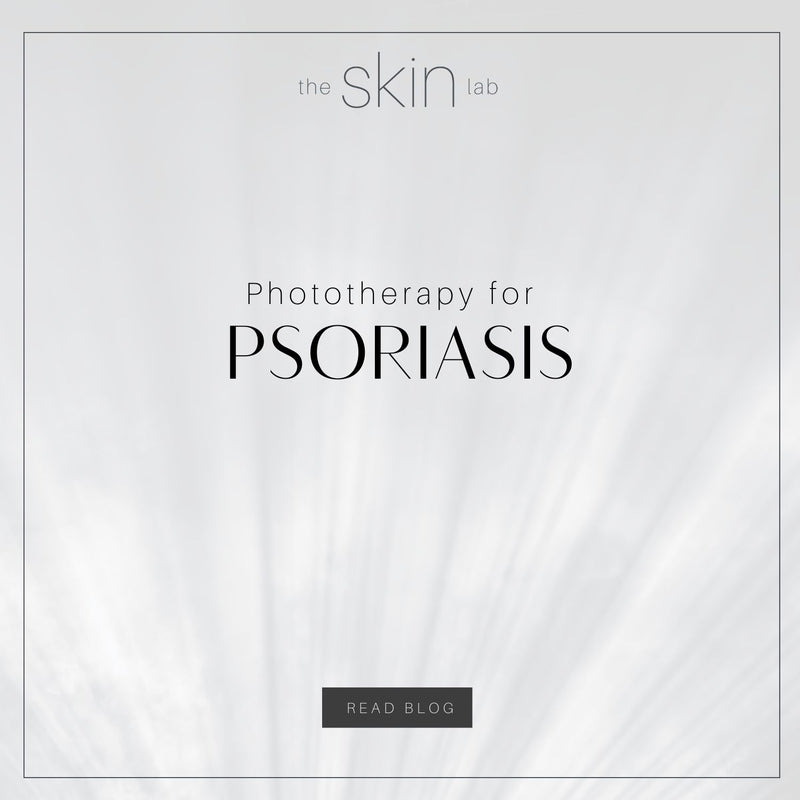LED Phototherapy improves Psoriasis

What is Psoriasis
Psoriasis is an immune-mediated disease that causes raised, dry, scaly patches on the skin due to inflammation in the skin. Skin cells multiply up to 10 times faster than normal resulting in build up of bumpy red patches covered with white scales. Patches are typically found on the elbows, knees, scalp, lower back, face, palms, and soles of feet, but can affect other places (fingernails, toenails, and mouth).
Symptoms
Symptoms can vary and there are different types of psoriasis. People with psoriasis can also get a type of arthritis called psoriatic arthritis. It causes pain and swelling in the joints. Some of the most common symptoms inlcude:
- Dry, Itchy and sometimes painful skin patches
- Redness
- Silver scales on skin
- Discoloration and pitting of the nails
- Plaques of scales or crust on the scalp
Causes
The cause of psoriasis is unknown. Experts believe that it is a combination of things that can trigger this disease.
Common psoriasis triggers:
- Cuts, scrapes, or surgery
- Emotional stress
- Strep infections
- Medications, including blood pressure medications, anti-malarial drugs, lithium and other mood stabilizers, antibiotics, and NSAIDs.
Treatment
There is no cure for psoriasis. However, there are some treatments that can greatly improve the appearance and reduce symptoms. Most common treatments include steroid creams, retinoids, Vitamin D, certain medications and phototherapy. At the Skin Lab we have seen amazing results with our advanced LED Phototherapy.
What is Led Phototherapy
Light Emitting Diode (LED) is otherwise known as light therapy (LED Phototherapy). Originally developed by NASA for astronauts who could become injured or ill on a long-term space flight, the technology is used today as a safe and natural method of treating a variety of skin and pain conditions such as acne, anti-aging, and pain.
Using clinically proven wavelengths to stimulate fibroblasts to increase collagen and elastin, LED light therapy will reduce the appearance of fine lines and wrinkles, while experiencing an improvement in skin texture, quality and smoothness.
LED light therapy uses various wavelengths that correspond to different visible colors. Each color penetrates the skin at different depths.
Blue Light
Blue light (400-480 nm) affects the uppermost layer of your skin. Clinical research has shown that blue wavelength works safely and effectively, without abrasive chemicals, harmful UV-rays or side effects, to destroy acne-causing bacteria — not only clearing up existing blemishes, but preventing future breakouts before they happen. Blue light can also reduce the overproduction of the skin cells, regulate T-cell immune responses, and improve plaque psoriasis.
Red and Near Infrared Light
Red light can penetrate deeper into your skin. It may reduce inflammation and stimulate the production of collagen. A clinical review in 2017 found that red light (830 and 633 nm) can improve psoriasis. People with plaque psoriasis were able to clear 60 percent to 100 percent of their skin with 2 red light sessions a week for 4 to 5 weeks.
Light Therapy Benefits
- Slow rapidly growing skin cells
- Suppress an overly active immune system
- Reduce inflammation and allow the skin to heal
- Reduce or eliminate the itch
WARNING
Don’t apply your salicylic acid (used to treat acne and psoriasis scale) before any phototherapy treatments. . When applied to the skin beforehand, salicylic acid can make UVB phototherapy less effective.
Zhang P, Wu MX. A clinical review of phototherapy for psoriasis. Lasers Med Sci. 2018 Jan;33(1):173-180. doi: 10.1007/s10103-017-2360-1. Epub 2017 Oct 24. PMID: 29067616; PMCID: PMC5756569.
https://www.ncbi.nlm.nih.gov/pmc/articles/PMC5756569/